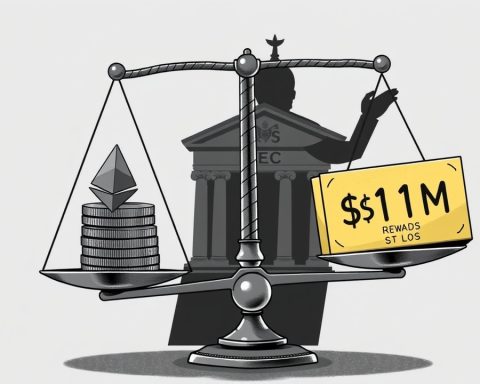The Evolving Landscape of Decentralized Finance (DeFi)
The landscape of decentralized finance (DeFi) is increasingly dependent on a well-defined regulatory framework that strikes a balance between fostering innovation and ensuring user safety. The existing call from industry leaders emphasizes that a generic regulatory approach is inadequate. Instead, tailored, risk-based regulations that align with DeFi’s unique characteristics are essential to encourage growth while safeguarding consumers.
Regulatory Scrutiny and Innovation
Recent discussions have highlighted concerns that stringent regulatory oversight may stifle innovation—a sentiment that has gained traction following events in the past year. The scrutiny from U.S. regulators, notably the Biden administration, intensified in 2022 when prominent crypto exchanges like Coinbase and Binance found themselves embroiled in legal disputes over alleged securities law breaches.
However, a shift occurred when the Securities and Exchange Commission (SEC) eventually decided to drop its case against Coinbase, signaling a potential for more refined regulatory guidelines in the future.
The complexity of DeFi is rooted in its core functions, including transparency, automation, and immutability. Without a clear set of regulations, the sector risks being overshadowed by fraudulent schemes that exploit the system, thereby undermining trust in blockchain technology.
Pathways for Self-Regulation
One path forward is the advocacy for self-regulation within the DeFi sector. By establishing robust internal frameworks—such as transaction monitoring and wallet verification—DeFi platforms can proactively enhance security and foster legitimacy. This self-regulatory approach not only protects users but also promotes transparency, aligning the sector more closely with traditional financial practices without imposing overly burdensome regulations.
Emerging Institutional Interest and Regulatory Clarity
Institutional interest in DeFi is poised to grow as regulatory clarity emerges. The forthcoming Markets in Crypto-Assets (MiCA) regulation could play a pivotal role in creating a structured environment for DeFi innovation, albeit with associated compliance costs that may pose challenges for smaller projects. Increased scrutiny might drive some initiatives to falter, but the long-term goal is to cultivate a more reliable ecosystem that invites institutional investment and enhances consumer trust.
As the anonymity of cryptocurrency transactions diminishes due to enhanced blockchain analysis, regulations like MiCA could facilitate compliant DeFi solutions, such as liquidity pools that adhere to regulatory standards. This would empower traditional financial institutions to cautiously integrate with DeFi, thereby overcoming significant barriers that have traditionally alienated banks from the crypto space.
Future Developments and Regulatory Sandboxes
January 2025 will mark a significant easing of compliance burdens for banks with the repeal of Staff Accounting Bulletin (SAB) 121, allowing them to recognize cryptocurrencies more seamlessly in their financial reports. This move, alongside proposals such as SAB 122, aims to shift the focus from reactive compliance to proactive integration of DeFi within the traditional banking sector.
Innovators in DeFi can also benefit from the implementation of regulatory sandboxes—controlled environments where new projects can be tested with regulatory oversight. These initiatives, like those in the UK and European Union, allow startups to experiment without the immediate pressures of full regulatory compliance, ultimately leading to genuine innovation and competitive market entry.
Conclusion
In conclusion, while the complexities of regulating the DeFi sector are significant, a collaborative approach between regulators and industry innovators could yield solutions that not only protect users but also foster an environment where blockchain technology can thrive. Future developments in regulatory frameworks will be key in unraveling pathways for integration and advancement within the digital finance landscape.

















